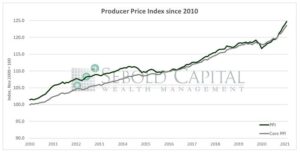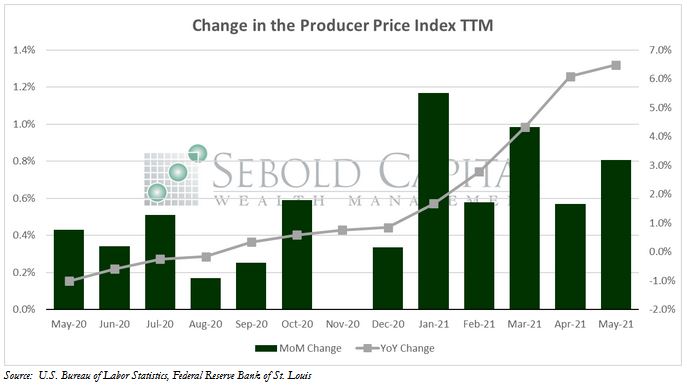 The Producer Price Index (PPI) looks at the average change in selling prices from the viewpoint of domestic producers of both goods and services. Three areas of production are observed: industry-based, commodity-based, and commodity-based final demand-intermediate demand. Investors look to the producer price index, which is a more relevant way of gauging inflation than CPI because of the large basket of producers (100,000 price points) that Bureau of Labor Statistics uses as a data pool for their calculations.
The Producer Price Index (PPI) looks at the average change in selling prices from the viewpoint of domestic producers of both goods and services. Three areas of production are observed: industry-based, commodity-based, and commodity-based final demand-intermediate demand. Investors look to the producer price index, which is a more relevant way of gauging inflation than CPI because of the large basket of producers (100,000 price points) that Bureau of Labor Statistics uses as a data pool for their calculations.
In May, the PPI rose by 0.8% to a level of 124.8, topping market estimates of a 0.6% advance. Producer prices have surged by 6.6% over the past year, the single year-over-year advance since the series started in 2010. Core PPI, which excludes food and energy prices, increased by 0.7% to 123.6 last month and has risen by 4.8% over the past twelve months.
Prices that producers pay for services and final demand goods continued to climb last month, as warning signs for inflation keep flashing all throughout the economy. Commodity prices have soared by 19.0% since last May and that is likely to continue in the near term. A combination of supply chain bottlenecks and rising consumer demand fueled by excessive fiscal stimulus has created a near-perfect recipe for the build-up of inflationary pressure. Some businesses have started to pass on these rising costs onto their consumers, driving annual consumer inflation to 5% according to the last CPI reading. Prices will continue to rise for both producers and consumers until the Fed decides that inflation is starting to take root in our economy and starts the process of slowing the monetary easing.

June 15, 2021
